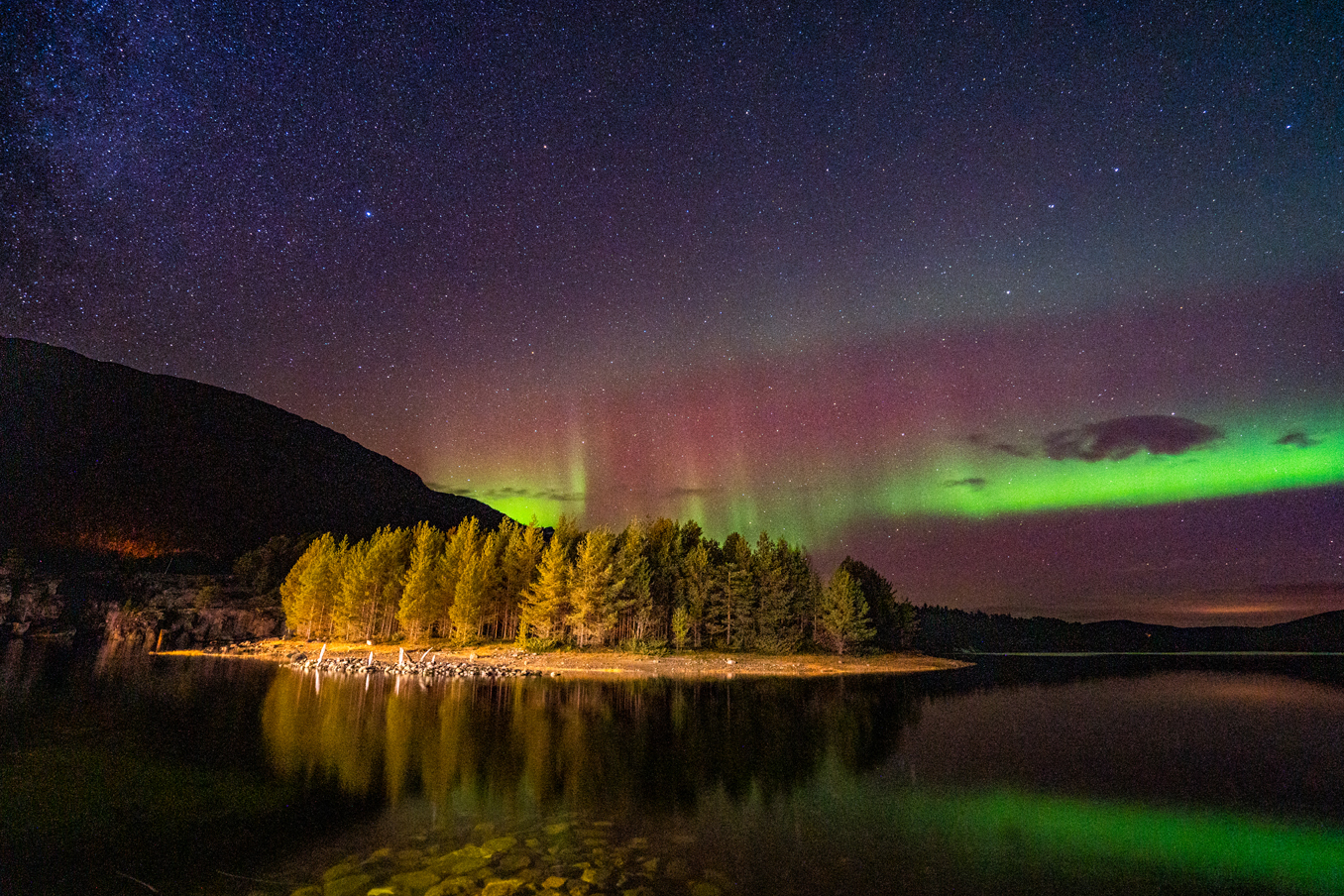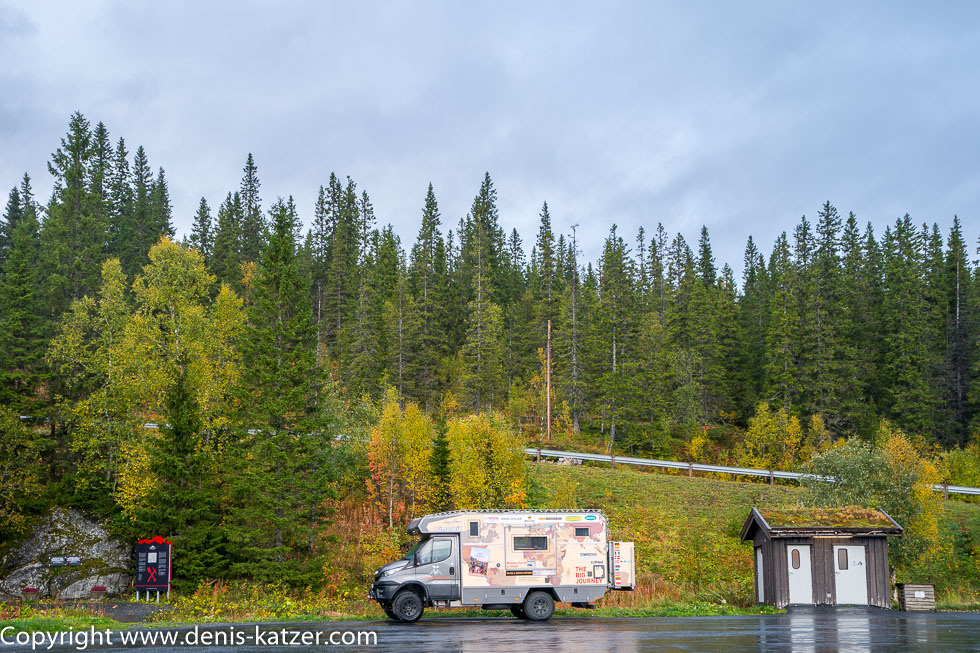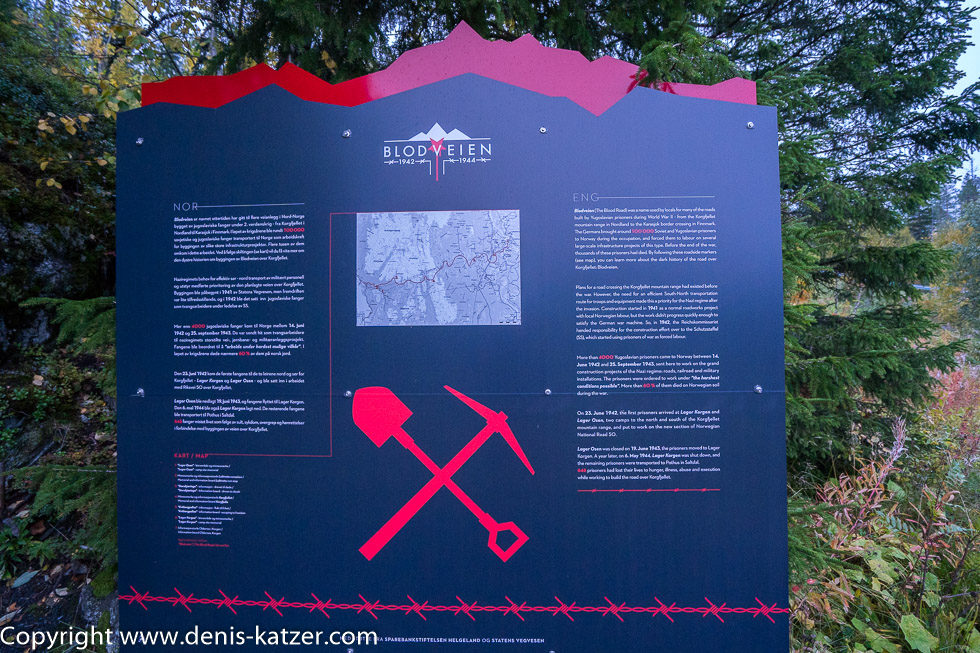
The Blood Road
N 66°02'55.8' E 013°36'35.8''
Date:
22.09.2020
Day: 051
Country:
Norway
Location:
On the Europastrasse E6
Daily kilometers:
392 km
Total kilometers:
4685 km
Soil condition:
Asphalt
Ferry
0
Bridge crossings:
5
Tunnel passages:
8
Sunrise:
06:41 am
Sunset:
7:16 pm
Temperature day max:
16°
Night temperature min:
10°
Departure:
10:00
Arrival time:
19:00
(Photos of the diary entry can be found at the end of the text).
Click here for the podcasts!
Link to the current itinerary
(For more posts click on one of the flags in the map)
Shortly before the day hides behind the cloudy mountains, we find a place for the night on the E6. As a matter of routine, I walk around the Terra once after putting it down. Among other things, I take a close look at the tires, because they are mainly responsible for a safe ride. If a nail or other sharp object has unnoticedly dug into the tread and the tire bursts while driving, this would be fatal on the many mountain passes. After our Russian Arctic Circle expedition last year, without us noticing, the inside of the left rear tire was obviously damaged by a sharp-edged stone. We drove about 6000 kilometers with this tire. Back in Germany, a van stopped next to us at a red light. The driver lowered his passenger window and waved at us, gesticulating wildly. “What is it?” I asked after I had also lowered my window. “Your left rear tire doesn’t look good,” he warned us. A few hundred meters further on, I stopped in a parking lot, checked the tire and found nothing. Then I dug under the Terra and discovered a crack about 10 centimeters long in the outer casing on the inside. “Unbelievable! It would have torn him apart in no time. Imagine if that had happened to us on the highway,” I said to Tanja. Since then, I have paid special attention to our tires. We now drive the Crossleader Wildtiger (T01 35X12.50R18 131K 14 Ply M/T Mud tire), a fantastic all-season tire with pronounced tread blocks, which was specially developed for extreme ground conditions. According to the manufacturer, it has super grip in dry, but also in wet, muddy and winter weather conditions. “Looks good,” I shout to Tanja, who is just leaving the Terra with Ajaci for a walk. As I climb into the cabin, my gaze falls on a blue sign. Curious, I walk over to read what it says.
“The Blood Road was a name used by the locals for many of the roads built by Yugoslav prisoners during the Second World War. From the Korgfjellet mountains in Nordland to the Karasjok border crossing in Finnmark. During the occupation, the Germans brought around 100,000 Soviet and Yugoslavian prisoners to Norway and forced them to work on several large infrastructure projects of this kind.
There were already plans for a road across Korgfjellet before the war. However, the need for an efficient transportation route for troops and equipment in the south to the north made this a priority for the Nazi regime after the invasion. Construction began in 1941 as a normal road-building project with local Norwegian labor, but the work did not progress fast enough to satisfy the German war machine. In 1942, the Reichskommissariat handed over responsibility for the construction work to the Schutzstaffel (SS), which used prisoners of war as forced laborers.
More than 4,000 Yugoslav prisoners came to Norway between June 14, 1942 and September 25, 1943 to work on the Nazi regime’s major construction projects: Roads, railroads and military facilities. The prisoners were ordered to work under “the harshest possible conditions”. More than 60% of them died on Norwegian soil during the war.
On June 23, 1942, the first prisoners arrived at the Korgen and Osen camps, two camps north and south of the Korgfjellet mountains. They were forced to build the new section of the Norwegian National Road 50.
Camp Osen was closed on June 19, 1943, and the prisoners were moved to Camp Korgen. One year later, on May 6, 1944, Camp Korgen was closed and the remaining prisoners were taken to Pothus in Saltdal. 646 prisoners had lost their lives through hunger, disease, abuse and execution when they were forced to build the road over Korgfellet.”
Torn from my wonderful travel dream, I walk back to Terra and think of the occupation of Norway by the German Wehrmacht during the Second World War, which began with the Weserübung operation on the It began on April 9, 1940 and ended on May 8, 1945, the day of the unconditional surrender of the Wehrmacht. I open the door to the cabin, press the rocker switch to extend the stairs, climb into the cozy, warm cabin and tell Tanja about the information board. During the entire trip, of course, we came across old German army bunkers that were built along the Norwegian coast to defend Norway’s approximately 3400-kilometer-long sea border. The Germans built a total of 8,119 bunkers for the Atlantic Wall, a line of defense along the coasts of the Atlantic, the English Channel and the North Sea. Even if the gray, ugly concrete bunkers remind us of the gruesome past, the information on the information board outside the door of Terra Love makes our hair stand on end. “Somehow the information really got to me,” I say, sitting at the table in Terra. “Yes, the past catches up with you to a certain extent,” says Tanja. “Especially when I think of the immense suffering involved in building the road.” “Didn’t the Germans pay reparations to Norway after the war?” asks Tanja. “As far as I know, they paid 60 million DM in 1959 as part of an agreement.” “Not much either, considering all the things the Germans did and destroyed in this country.” “True, but we just heard today about how the Norwegians oppressed and discriminated against the Sami for 100 years and that they paid the indigenous people of this country, the true owners of the land, if you can own land at all, just 10 million euros in compensation.” “You’re right about that. Apart from that, no money in the world will bring back the dead. Regardless, would you like to travel the Blood Road?” “I don’t know. It would make sense, because this part of history is also part of Norway.” “If we decide to do that tomorrow, we’d have to leave the E6 at the junction and take a detour,” Tanja replies. “Yes, I know.” “We shouldn’t lose sight of our destination, the North Cape.” “We shouldn’t, but somehow I’d still like to drive this blood road.” “Let’s decide in the morning.” “Okay,” I reply. During the night I toss and turn from left to right, sleep extremely restlessly and dream of the lost, tortured souls of the forced laborers who roam this area and have not found peace to this day…



